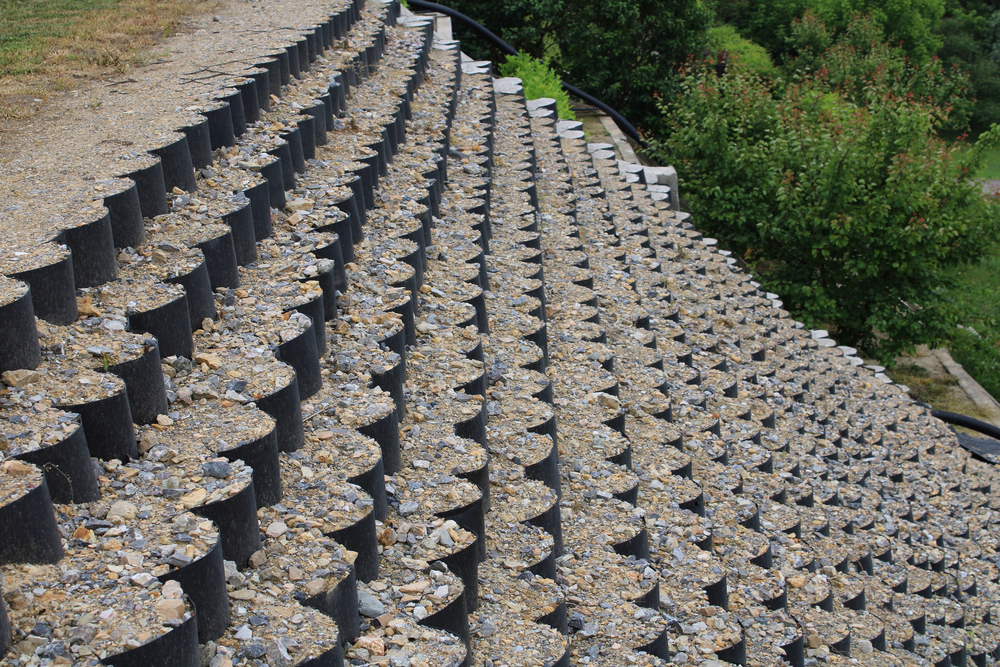By Anisa Pinatih
Building a home along the side of a hill with enhanced natural ventilation and an ample source of fresh air may be a dream of many people. In the upcoming articles, we will be presenting our interviews with three members of the Malaysian Institute of Architects (PAM) about building on sloped land and incorporating nature into homes.
Before that, let us revisit a key component of constructing on a site with different elevations: Earth Retaining Stabilising Structures (ERSS). Structures such as sheet piles, soldier piles, soil nailing, ground anchors and shotcrete are used to maintain the shape of excavation during construction, earth filling or cutting to maintain two different ground surface elevations.
EARTH RETAINING STRUCTURE
Retaining structures such as gabion walls, cast-in-situ walls, as well as reinforced and anchored earth are used for supporting soil laterally so that it can be retained at different levels on the two sides.
A gabion wall is made of a wire-mess with rocks, concrete, or sometimes sand and soil, which makes it flexible and able to accommodate large and differential settlements without distress. It is also pervious and well suited for bank stabilisation.
For a more established design procedure, conventional cast-in-place wall system is a better option as it is durable in many environments, but this requires a deeper foundation support and longer construction period as formwork must be erected and concrete poured and cured before backfilling.
In a broad sense, earth retaining structures—including other types such as sheet pile walls, braced excavation and secant pile walls—can be classified according to their face inclination. If the inclination is greater than 70 degrees, they are typically characterised as retaining walls, and if flatter, they are categorised as slope stabilisers.

Gabion retaining wall; image by Opart Suamsiri/Shuttertock
SOIL NAILING
Soil nailing is an advanced technique of slope stabilisation with the use of slender elements such as reinforcing/steel bars to strengthen or stabilise the existing steep slopes and excavations as construction proceeds from the top to bottom.
In this technique, soil is reinforced with bars installed into pre-drilled holes and then grouted at an inclination of 10 to 20 degrees with the vertical axis. As the excavation proceeds, the shotcrete, concrete or other grouting materials are applied on the excavation face to grout the reinforcing steel or nails.
Soil nailing is commonly used to stabilise structures and buildings located in various soil conditions as it is one of the most effective slope stabilising methods. Also, architectural features in most cases remain unaffected as they can be sited to pass around or between obstacles.
CELLULAR CONFINEMENT SYSTEMS
Cellular confinement systems, also known as geocells, are made of high-density polyethylene ultrasonically bonded together so they become extremely strong. They have an inert honeycomb structure for the infill that prevents downwards migration of material. Once it is filled with granular materials, the system creates an erosion barrier and distributes weight-bearing loads. The infill materials can be soil, gravel and sand, and concrete for more durable situations.
Aside from the application for driveways, roads, drainage works and other infrastructure construction, geocells can also effectively control erosion as they prevent movement of the infill and can act as a counterweight on sloped areas to provide stability.

Ground surface stabilised with perforated geo cells filled with gravel stones; image by Natic/Shutterstock
WHAT’S NEXT?
Building on sloped land often requires excavations and the use of ERSS, like the examples above. In some situations, this may be unavoidable, but the PAM architects we interviewed suggested avoiding retaining walls, especially in building residential spaces in Malaysia where moisture is high and the walls tend to get damp. Excavations should also be avoided as it will destabilise the slopes.
In fact, any intrusion to the natural landscape should be minimised. Trees, especially the mature ones, should be kept intact. In the words of an award-winning PAM architect, Melvyn J Kanny, “Engage with the landscape. Design with the slope, not against it.” How can this design principle achieve the desired outcomes while keeping the natural surrounding mostly untouched? Read the first interview below. – Anisa Pinatih, Construction+ Online
Read: Melvyn J Kanny on working with slopes and rethinking high-density development
Disclaimer: Construction+ makes reasonable efforts to present accurate and reliable information on this website, but the information is not intended to provide specific advice about individual legal, business, or other matters, and it is not a substitute for readers’ independent research and evaluation of any issue. If specific legal or other expert advice is required or desired, the services of an appropriate, competent professional should be sought. Construction+ makes no representations of any kind and disclaims all expressed, implied, statutory or other warranties of any kind, including, without limitation, any warranties of accuracy and timeliness of the measures and regulations; and the completeness of the projects mentioned in the articles. All measures, regulations and projects are accurate as of the date of publication; for further information, please refer to the sources cited.
Hyperlinks are not endorsements: Construction+ is in the business of promoting the interests of its readers as a whole and does not promote or endorse references to specific products, services or third-party content providers; nor are such links or references any indication that Construction+ has received specific authorisation to provide these links or references. Rather, the links on this website to other sites are provided solely to acknowledge them as content sources and as a convenient resource to readers of Construction+.











